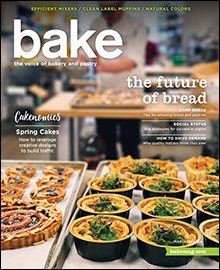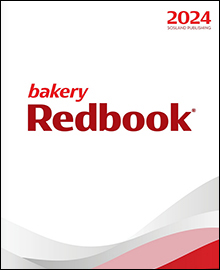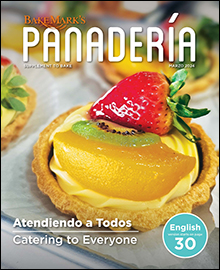ADM recently established the Palm Supplier Scorecard, which helps ADM confirm that its direct suppliers’ management and control systems meet its standards for responsible palm sourcing. ADM reports sustainable palm oil supplies using volumes of palm oil and palm kernel oil certified by Roundtable for Sustainable Palm Oil (RSPO).
In 2020, ADM conducted a Palm Scorecard assessment with all direct palm suppliers, helping the company identify how they’re working toward No Deforestation, No Peat, No Exploitation (NDPE).
“We are proud that 100% of our suppliers have a responsible sourcing policy, while 99% of suppliers publicly report progress on NDPE implementation,” says Michelle French, manager, corporate responsibility for ADM. “Currently, we are requesting our direct palm oil suppliers’ transition to the NDPE Implementation Reporting Framework (IRF) in 2021 to track progress on delivering NDPE commitments in the palm oil supply chain.”
Custom oil blends can play a variety of roles for product developers. Some key priorities of their functional benefits in applications include targeting shelf life, solid fat characteristics, flavor, eating experience and nutrition, explains Michelle Peitz, technical sales, Ag Services and Oilseeds, Refined Oils, ADM.
The sensory experience is particularly important for bakery products, and oil plays a critical role in creating a winning solution. For example, the fat system used in donut production influences how flavors are released, how sugar adheres and even how staling can occur. Solid fat solutions like palm oil are used widely in donuts, but custom oil blends can tailor the solid fat content to optimize enjoyment.
Functionality
Manufacturers of baked goods such as cakes, pies, puff pastries, cookies and icings look to shortening, margarine and oil suppliers for specific ingredients, which confer functionality to the finished bakery application, explains Roger Daniels, vice president research, development, innovation and quality for Stratas Foods LLC.
In the past shortenings were manufactured to exacting standards relative to fat/oil ratios and type of fat/oil fatty acid combinations through the use of partial hydrogenation, he says. The undesired side effect of this process was the development of trans fatty isomers in the finished shortening. As such, partial hydrogenation is no longer practiced in the manufacture of bakery shortenings.
“However, the need for the exacting standards of the past in the PHO world remains and continues to be the focus of Stratas Foods, which is to say how do you deliver PHO performance without the PHO,” Daniels says. “To this end, Stratas Foods has invested heavily in the post PHO world in enabling technologies based on high oleic soybean and canola oils coupled with our flex processing technology. The combination of the correct base oil combination paired with the flex process has resulted in an extensive product line of shortening combinations for the myriad of bakery applications.”
One range of products utilizes high oleic oils in combination with a hard fat source based on soy and cottonseed oils. The benefit with this approach is the oleic acid content functions as a bridge between liquid oils and the sold fat component resulting in a high functional shortening. Specifically, a bakery shortening which creams and tenderizes while ultimately contributing to the structure of the finished product.
A cookie application is one in which the fat system functions to provide lubricity and tenderness to the dough and contribute to the palatability of a cookie, Daniels explains. This applies to drop and wire cut formats and the shortening of choice is typically classified as an all-purpose shortening.
“As you increase the complexity of the baked product the shortening also becomes more complex and may include the use of emulsifiers,” he says. “An emulsifier is a component of a shortening which is present to maximize air entrapment. Specifically, an emulsifier is comprised of fat loving and water loving entities which in turn function to bridge the cake or icing ingredients to achieve a uniform mix of both fat and water-based ingredients.



